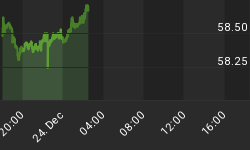Household Debt Summary
- Household debt for the first quarter of 2016 is up $136 billion.
- Mortgage debt, up $120 billion, accounts for most of the gain.
- Student loan debt, up $29 billion, accounts for most the rest.
- Total household debt still below 2008 peak
The Federal Reserve of New York reports Household Debt Steps Up, Delinquencies Drop.
Household indebtedness continued to advance during the first three months of 2016 according to the Federal Reserve Bank of New York's Quarterly Report on Household Debt and Credit, which was released today. Repayment trends also generally improved across the board, driven primarily by continuing improvements in mortgage delinquency rates. The report is based on data from the New York Fed's Consumer Credit Panel, a nationally representative sample of individual- and household-level debt and credit records drawn from anonymized Equifax credit data.
"Delinquency rates and the overall quality of outstanding debt continue to improve," said Wilbert van der Klaauw, senior vice president at the New York Fed. "The proportion of overall debt that becomes newly delinquent has been on a steady downward trend and is at its lowest level since our series began in 1999. This improvement is in large part driven by mortgages."
Household Debt and Credit

90-Day Delinquencies

Note 1: Delinquency rates are computed as the proportion of the total outstanding debt balance that is at least 90 days past due.
Note 2: As explained in a previous report, delinquency rates for student loans are likely to understate effective delinquency rates because about half of these loans are currently in deferment, in grace periods or in forbearance and therefore temporarily not in the repayment cycle. This implies that among loans in the repayment cycle delinquency rates are roughly twice as high.
Total Debt Balance
As of March 31, 2016, total household indebtedness was $12.25 trillion, a $136 billion (1.1%) increase from the fourth quarter of 2015. Overall household debt remains 3.3% below its 2008 Q3 peak of $12.68 trillion.
It's getting harder and harder for households to ramp up debt, despite the lowest rates in history.
Check out the trend in mortgage debt vs. the trend in student loan debt. The two items are not unrelated.
Household formation is low because of student debt, boomer demographics, and changing attitudes of millennials.
















